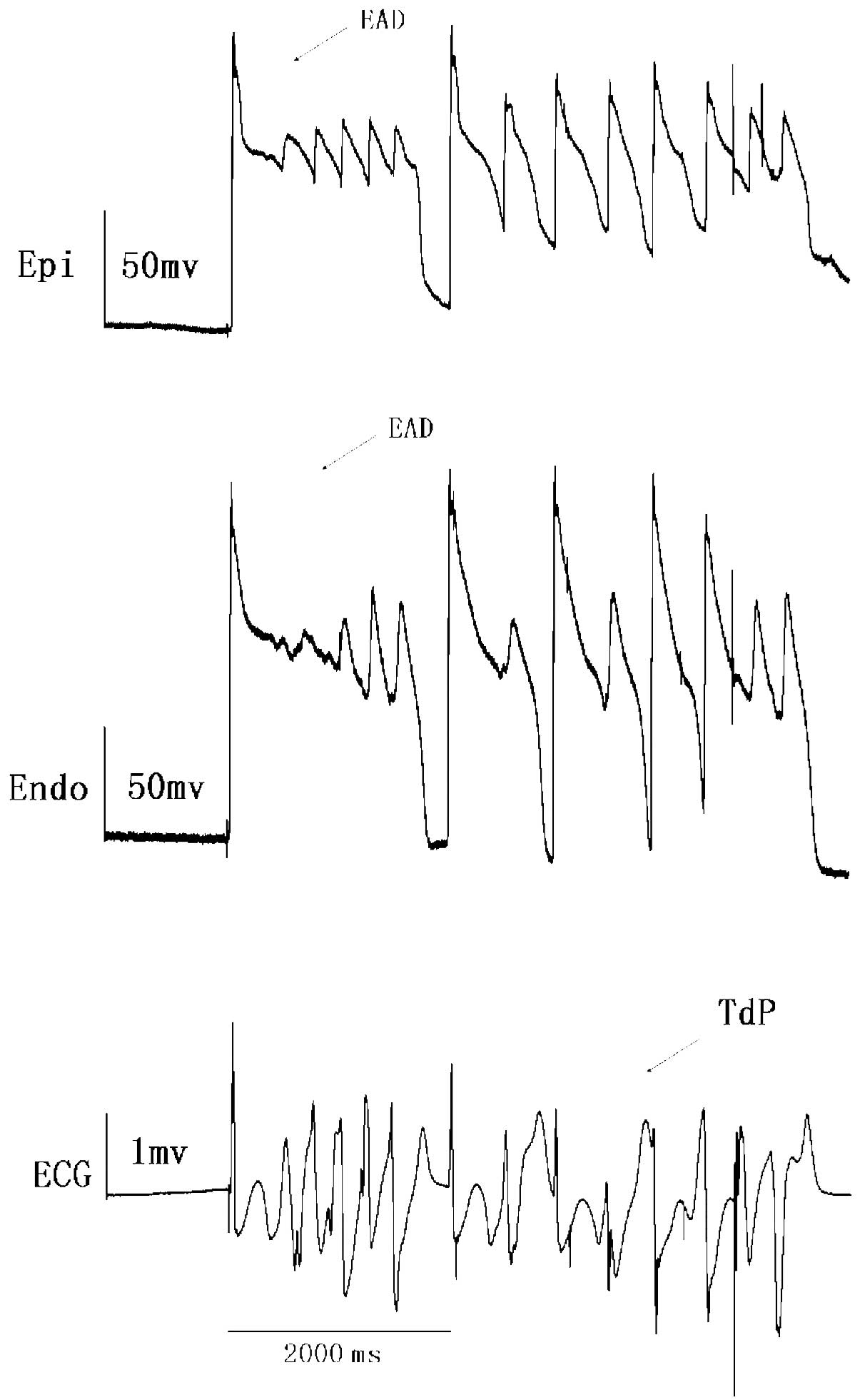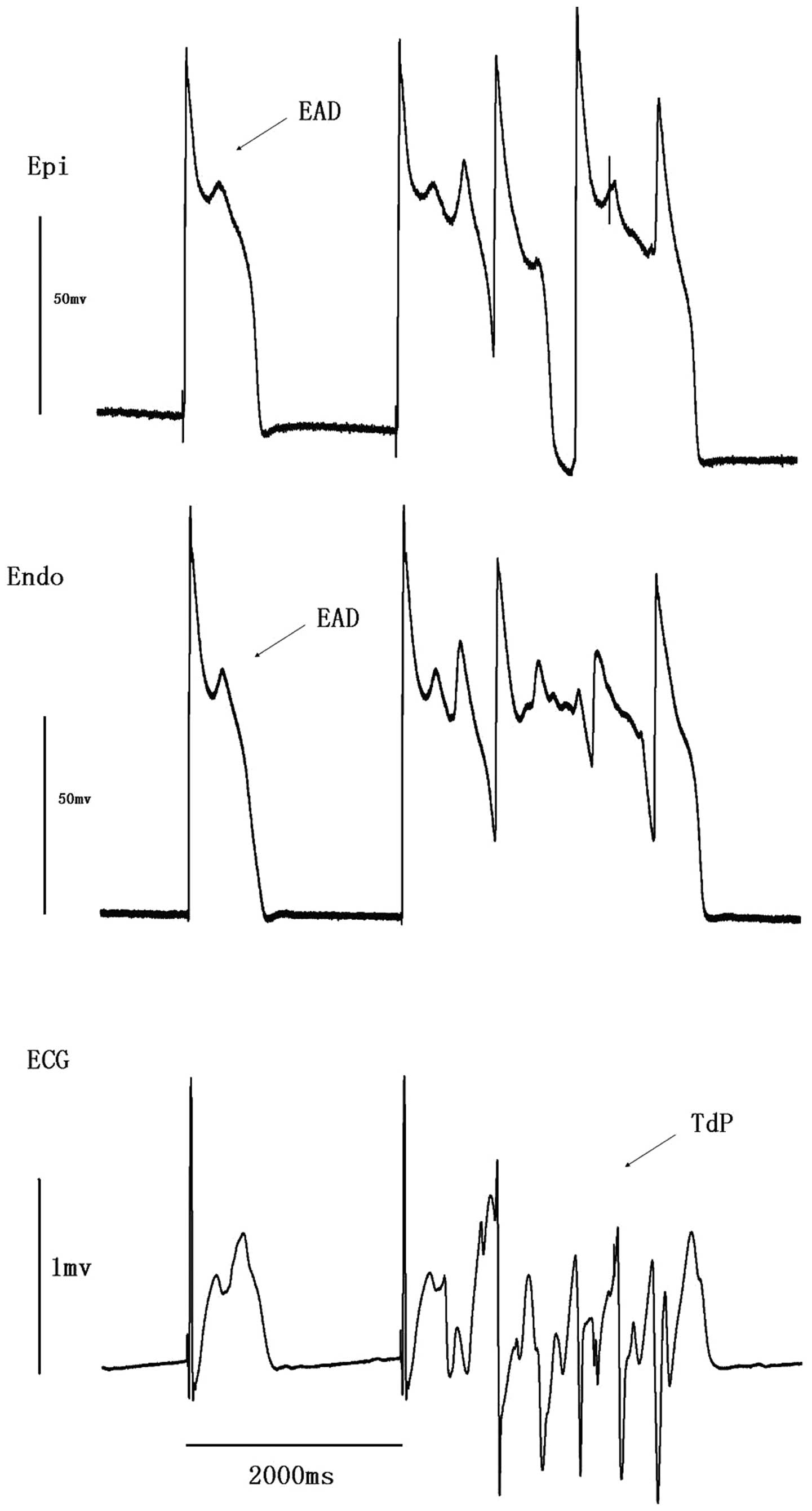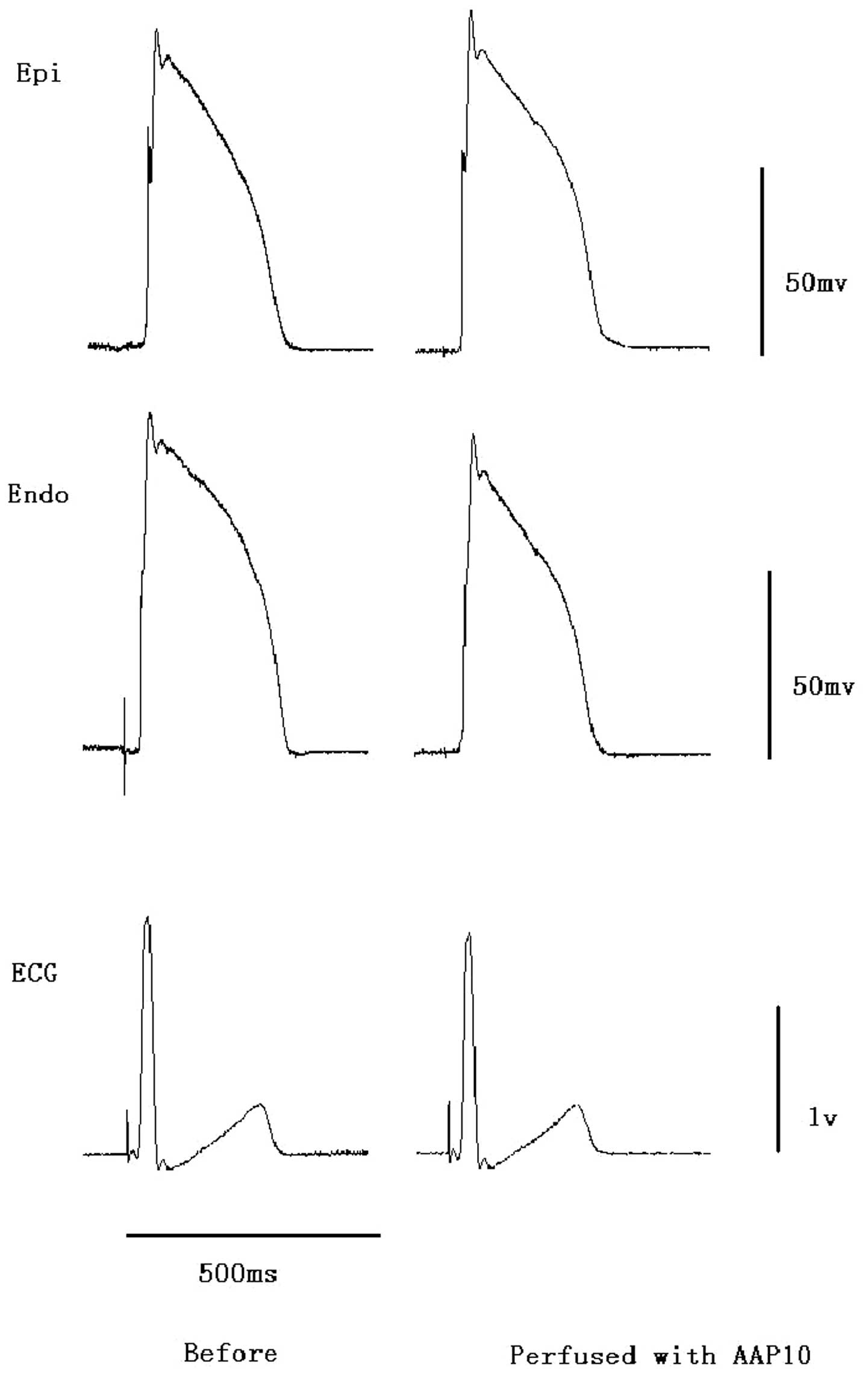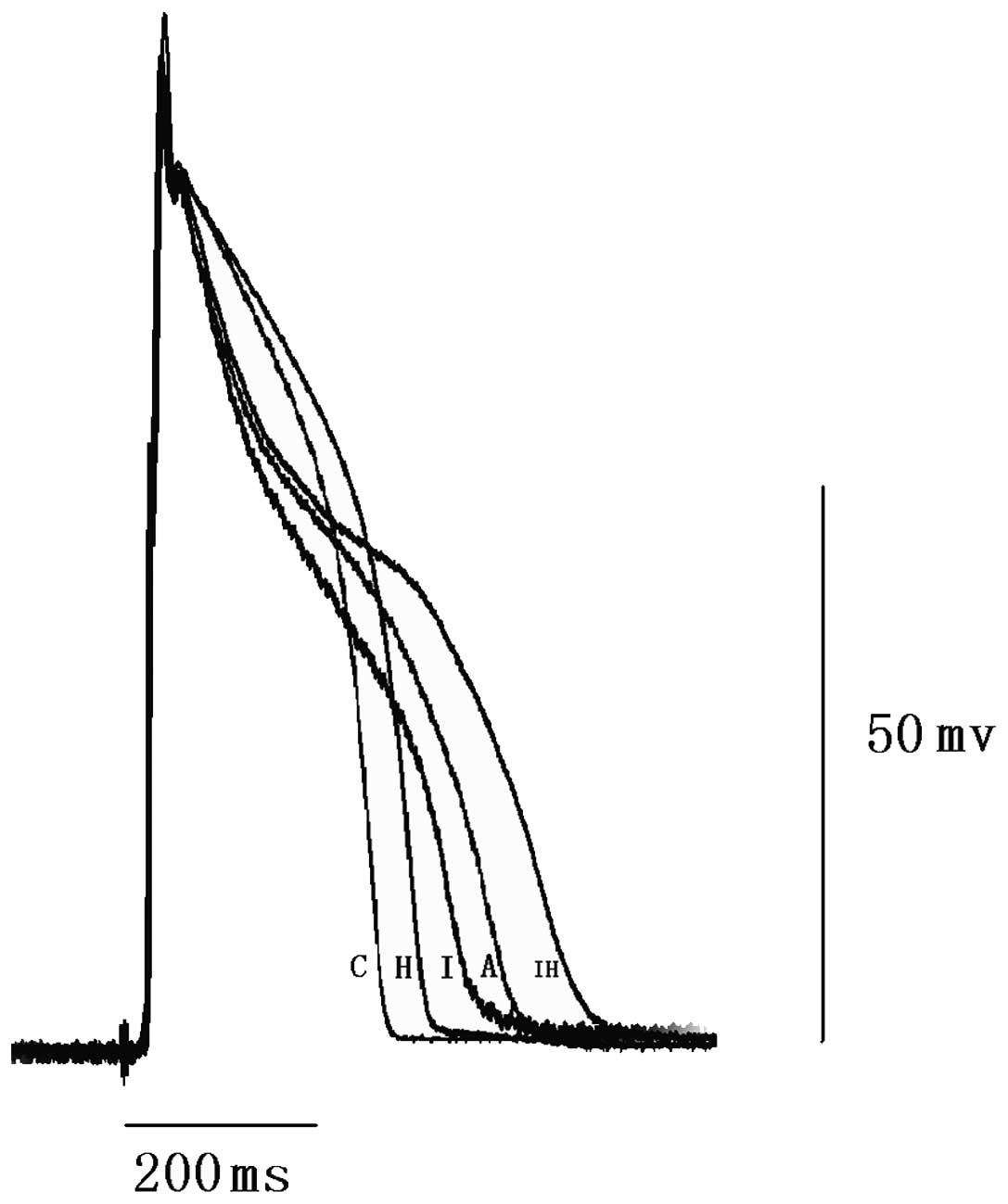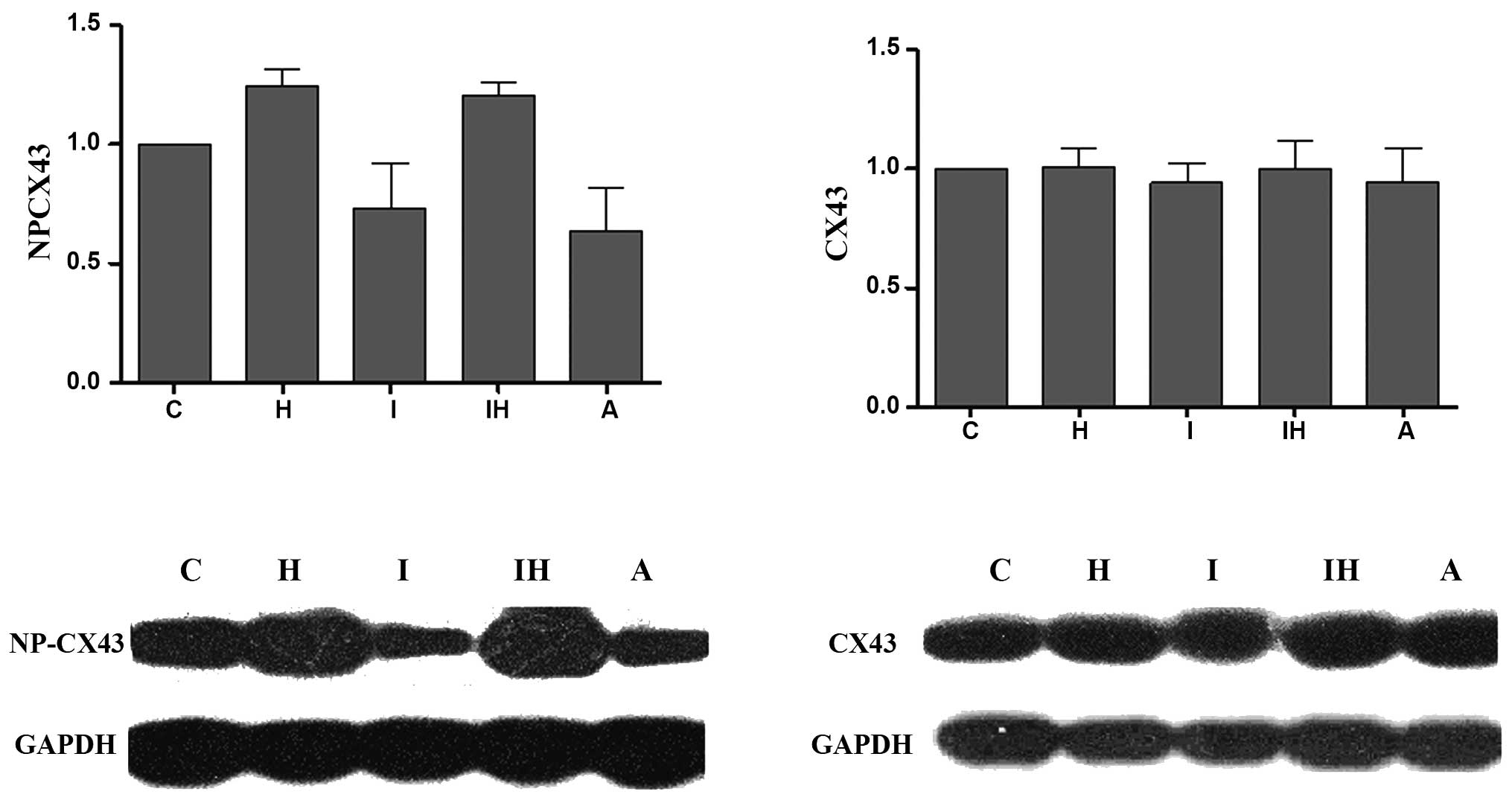|
1
|
Roden DM: Drug-induced prolongation of the
QT interval. N Engl J Med. 350:1013–1022. 2004. View Article : Google Scholar : PubMed/NCBI
|
|
2
|
Yamada S, Kuga K and Yamaguchi I: Torsade
de pointes induced by intravenous and long-term oral amiodarone
therapy in a patient with dilated cardiomyopathy. Jpn Circ J.
65:236–238. 2001. View Article : Google Scholar : PubMed/NCBI
|
|
3
|
Kowey PR, VanderLugt JT and Luderer JR:
Safety and risk/benefit analysis of ibutilide for acute conversion
of atrial fibrillation/flutter. Am J Cardiol. 78:46–52. 1996.
View Article : Google Scholar : PubMed/NCBI
|
|
4
|
Zeltser D, Justo D, Halkin A, Prokhorov V,
Heller K and Viskin S: Torsade de pointes due to noncardiac drugs:
most patients have easily identifiable risk factors. Medicine
(Baltimore). 82:282–290. 2003. View Article : Google Scholar : PubMed/NCBI
|
|
5
|
Naccarelli GV, Lee KS, Gibson JK and
VanderLugt J: Electrophysiology and pharmacology of ibutilide. Am J
Cardiol. 78:12–16. 1996. View Article : Google Scholar : PubMed/NCBI
|
|
6
|
Sicouri S, Glass A, Ferreiro M and
Antzelevitch C: Transseptal dispersion of repolarization and its
role in the development of Torsade de Pointes arrhythmias. J
Cardiovasc Electrophysiol. 21:441–447. 2010. View Article : Google Scholar : PubMed/NCBI
|
|
7
|
Antzelevitch C: Ionic, molecular, and
cellular bases of QT-interval prolongation and torsade de pointes.
Europace. 9(Suppl 4): iv4–iv15. 2007. View Article : Google Scholar : PubMed/NCBI
|
|
8
|
Raviña T, Raviña P and Gutierrez J:
Acquired long QT syndrome: risperidone-facilitated triggered
activity and Torsades de Pointes during complete AV block. I. Int J
Cardiol. 116:416–420. 2007.PubMed/NCBI
|
|
9
|
Wang L: Congenital long QT syndrome: 50
years of electrophysiological research from cell to bedside. Acta
Cardiol. 58:133–138. 2003.PubMed/NCBI
|
|
10
|
Antzelevitch C, Shimizu W, Yan GX, et al:
The M cell: its contribution to the ECG and to normal and abnormal
electrical function of the heart. J Cardiovasc Electrophysiol.
10:1124–1152. 1999.PubMed/NCBI
|
|
11
|
Aonuma S, Kohama Y, Akai K, Komiyama Y,
Nakajima S, Wakabayashi M and Makino T: Studies on heart. XIX
Isolation of an atrial peptide that improves the rhythmicity of
cultured myocardial cell clusters. Chem Pharm Bull (Tokyo).
28:3332–3339. 1980. View Article : Google Scholar : PubMed/NCBI
|
|
12
|
Quan XQ, Bai R, Liu N, Chen BD and Zhang
CT: Increasing gap junction coupling reduces transmural dispersion
of repolarization and prevents torsade de pointes in rabbit LQT3
model. J Cardiovasc Electrophysiol. 18:1184–1189. 2007. View Article : Google Scholar : PubMed/NCBI
|
|
13
|
Quan XQ, Bai R, Lu JG, et al:
Pharmacological enhancement of cardiac gap junction coupling
prevents arrhythmias in canine LQT2 model. Cell Commun Adhes.
16:29–38. 2009. View Article : Google Scholar : PubMed/NCBI
|
|
14
|
Hondeghem LM: QT and TdP. QT: an
unreliable predictor of proarrhythmia. Acta Cardiol. 63:1–7. 2008.
View Article : Google Scholar : PubMed/NCBI
|
|
15
|
Abdon NJ, Herlitz J and Bergfeldt L:
Drug-induced cardiac arrest maybe more common than believed.
Lakartidningen. 107:521–522. 524–525. 2010.(In Swedish).
|
|
16
|
Postema PG, Neville J, de Jong JS, Romero
K, Wilde AA and Woosley RL: Safe drug use in long QT syndrome and
Brugada syndrome: comparison of website statistics. Europace.
15:1042–1049. 2013. View Article : Google Scholar : PubMed/NCBI
|
|
17
|
Benjamin EJ, Wolf PA, D’Agostino RB,
Silbershatz H, Kannel WB and Levy D: Impact of atrial fibrillation
on the risk of death: the Framingham Heart Study. Circulation.
98:946–952. 1998. View Article : Google Scholar : PubMed/NCBI
|
|
18
|
Vos MA, Golitsyn SR, Stangl K, et al: The
Ibutilide/Sotalol Comparator Study Group: Superiority of ibutilide
(a new class III agent) over DL-sotalol in converting atrial
flutter and atrial fibrillation. Heart. 79:568–575. 1998.
View Article : Google Scholar : PubMed/NCBI
|
|
19
|
Hsieh MH, Chen YJ, Lee SH, Ding YA, Chang
MS and Chen SA: Proarrhythmic effects of ibutilide in a canine
model of pacing induced cardiomyopathy. Pacing Clin Electrophysiol.
23:149–156. 2000. View Article : Google Scholar : PubMed/NCBI
|
|
20
|
Antzelevitch C: M cells in the human
heart. Circ Res. 106:815–817. 2010. View Article : Google Scholar
|
|
21
|
Shimizu W, McMahon B and Antzelevitch C:
Sodium pentobarbital reduces transmural dispersion of
repolarization and prevents torsades de pointes in models of
acquired and congenital long QT syndrome. J Cardiovasc
Electrophysiol. 10:154–164. 1999. View Article : Google Scholar : PubMed/NCBI
|
|
22
|
Weissenburger J, Nesterenko VV and
Antzelevitch C: Transmural heterogeneity of ventricular
repolarization under baseline and long QT conditions in the canine
heart in vivo: torsades de pointes develops with halothane but not
pentobarbital anesthesia. J Cardiovasc Electrophysiol. 11:290–304.
2000. View Article : Google Scholar
|
|
23
|
Pu J, Zhang C, Quan X, et al: Effect of
potassium aspartate and magnesium on ventricular arrhythmia in
ischemia-reperfusion rabbit heart. J Huazhong Univ Sci Technolog
Med Sci. 28:517–519. 2008. View Article : Google Scholar : PubMed/NCBI
|
|
24
|
Yan GX and Antzelevitch C: Cellular basis
for the electrocardiographic J wave. Circulation. 93:372–379. 1996.
View Article : Google Scholar : PubMed/NCBI
|
|
25
|
Yan GX, Rials SJ, Wu Y, Liu T, Xu X,
Marinchak RA and Kowey PR: Ventricular hypertrophy amplifies
transmural repolarization dispersion and induces early
afterdepolarization. Am J Physiol Heart Circ Physiol.
281:H1968–H1975. 2001.PubMed/NCBI
|
|
26
|
Yan GX, Shimizu W and Antzelevitch C:
Characteristics and distribution of M cells in arterially perfused
canine left ventricular wedge preparations. Circulation.
98:1921–1927. 1998. View Article : Google Scholar
|
|
27
|
Gupta P, Patel C, Patel H, Narayanaswamy
S, Malhotra B, Green JT and Yan GX: T(p-e)/QT ratio as an index of
arrhythmogenesis. J Electrocardiol. 41:567–574. 2008. View Article : Google Scholar : PubMed/NCBI
|
|
28
|
Anttonen O, Väänänen H, Junttila J,
Huikuri HV and Viitasalo M: Electrocardiographic transmural
dispersion of repolarization in patients with inherited short QT
syndrome. Ann Noninvasive Electrocardiol. 13:295–300. 2008.
View Article : Google Scholar : PubMed/NCBI
|
|
29
|
Lu HR, Vlaminckx E, Van de Water A,
Rohrbacher J, Hermans A and Gallacher DJ: In-vitro experimental
models for the risk assessment of antibiotic-induced QT
prolongation. Eur J Pharmacol. 577:222–232. 2007. View Article : Google Scholar : PubMed/NCBI
|
|
30
|
Liu T, Brown BS, Wu Y, Antzelevitch C,
Kowey PR and Yan GX: Blinded validation of the isolated arterially
perfused rabbit ventricular wedge in preclinical assessment of
drug-induced proarrhythmias. Heart Rhythm. 3:948–956. 2006.
View Article : Google Scholar : PubMed/NCBI
|
|
31
|
Inoue M, Shimizu M, Ino H, et al: Q-T peak
dispersion in congenital long QT syndrome: possible marker of
mutation of HERG. Circ J. 67:495–498. 2003. View Article : Google Scholar : PubMed/NCBI
|
|
32
|
Dhein S, Manicone N, Müller A, Gerwin R,
Ziskoven U, Irankhahi A, Minke C and Klaus W: A new synthetic
antiarrhythmic peptide reduces dispersion of epicardial activation
recovery interval and diminishes alterations of epicardial
activation patterns induced by regional ischemia. A mapping study.
Naunyn Schmiedebergs Arch Pharmacol. 350:174–184. 1994. View Article : Google Scholar
|
|
33
|
Müller A, Gottwald M, Tudyka T, Linke W,
Klaus W and Dhein S: Increase in gap junction conductance by an
antiarrhythmic peptide. Eur J Pharmacol. 327:65–72. 1997.PubMed/NCBI
|
|
34
|
Lampe PD, TenBroek EM, Burt JM, Kurata WE,
Johnson RG and Lau AF: Phosphorylation of connexin43 on serine368
by protein kinase C regulates gap junctional communication. J Cell
Biol. 149:1503–1512. 2000. View Article : Google Scholar : PubMed/NCBI
|



